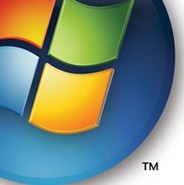Rich Internet Application platforms and the Stack

Within this environment, I wanted to talk a little bit about platforms and services. I'd like to think of it as a corollary to Dion's post. The very first comment on Slashdot touches on this, but I don't know if he realizes it. RunFatBoy says:
While Open Lazlo and other open source client solutions are exciting, I think people generally want a fully integrated, front to backend solution for developing these Rich applications. Sure they provide data binding, but solutions such as Rails that provide server-side functionality to directly manipulate the client side give me a more comfortable feeling.
I think he's right. With some trepidation, I wrote about the Platform Wars and how Microsoft and Adobe were the only real players left. Open Laszlo is a fun wildcard because it provides the ability to run on a variety of platforms, but it doesn't possess the same "stack" solution that Microsoft and Adobe provide. I think the Stack is very important, but I don't agree that the backend of the stack is important. I think RIAs are enabling a much different stack.
For a long time, Microsoft controlled the desktop. Windows has a gargantuan market share and the majority of desktop applications are written in to run on Windows. When the web came along, it opened things up some. We could run web applications, which contained some of the functionality of regular desktop applications, but were nowhere near as robust. And it showed. Gmail is great, but if you're a hardcore user of Outlook, you're not going to want to switch. With Rich Internet Applications, we can bridge this gap, but with current technologies, we can't take it all the way. That is what these platform wars are all about - providing Rich Internet Application solutions that bring the web and the desktop together.
This is the world of Rich Internet Applications - a desktop experience on the web and a web experience on the desktopIf you are a big software company, you can no longer afford to focus on either the web or the desktop. Pure web companies like 37 Signals and, to some extent Google, are great case studies, but users still like their desktop applications. In order to succeed, you have to gain mass adoption with technology to merge the web and the desktop with little extra development time. Microsoft and Adobe are coming at this from opposite directions, but they are on a collision course.

The full stack is why these companies have such a head start. But it is no longer about a stack that handles presentation and front end because our applications are straddling the world of the web and the world of the desktop. Both will be around for some time, and so the company that provides developers with the best functionality for both will see massive adoption. This is the world of Rich Internet Applications - a desktop experience on the web and a web experience on the desktop.